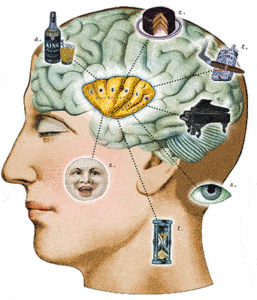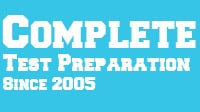Learning Styles – The Complete Guide
- Posted by Brian Stocker MA
- Date January 3, 2017
- Comments 0 comment
Learning Styles - The Complete Guide
Discovering how you learn will make your study time more efficient - you can learn more in a shorter time.

When it comes to learning, it’s probably no surprise to discover that we all learn differently. Most teachers are very aware of the different learning styles and use a variety of strategies to help pass information on to students, like yourselves, in the classroom. However, it is possible to take matters into your own hands in order to improve your own learning. If you are aware of your own learning style you will be able to make your study and revision time much more effective, which will not only help ensure academic success, but leave more time for all the fun stuff!
Not sure what your learning style is? Take the Quiz
Some disagree
Are learning styles real? Some people think not! You decide!
Learning Styles – The Complete Guide
A Brief Background of Learning Styles
Stewart and Felicitti (1992) defined learning styles as “educational conditions under which a student is most likely to learn.” We can also understand learning styles as the way in which information is absorbed, processed, understood and retained. Basically, we are looking at how people learn best. The way in which you approach certain tasks can be indicative of your learning style. For example, some people will always read the instructions before assembling a piece of IKEA furniture whilst others will dive straight into the assembly process and figure it out as they go. If both people achieve a safe and aesthetically pleasing piece of furniture, then no one approach is more beneficial than the other. However, by figuring out which approach works best for you will save you a lot of time a grief.
Learning Styles vs The Theory of Multiple Intelligences
Firstly, we need to understand the difference between learning styles and multiple intelligences. Intelligence used to be measured as a single entity, using the results of a single test. The result was known as your IQ. In 1983 a man named Howard Gardner challenged this idea. According to Gardner, intelligence is “the capacity to solve problems or to fashion products that are valued in one or more cultural setting.” Gardner formulated a list of seven intelligences, claiming that people have a range of intelligences that are often used in conjunction with each other. Multiple Intelligences are:
- Linguistic intelligence (word smart)
- Logical-mathematical intelligence (number/reasoning smart)
- Musical intelligence (music smart)
- Bodily-kinesthetic intelligence (body smart)
- Spatial intelligence (picture smart)
- Intrapersonal intelligence (self smart)
- Interpersonal intelligence (people smart)
- Naturalist intelligence (nature smart)
A few years later, in 1987, Neil Fleming initiated the idea of learning styles, calling it the VARK model. He created a set of systematic tests and help sheets to allow students and teachers to understand the various learning styles. He identified these as visual, auditory, read/write and kinesthetic (VARK). Quite often, as is the case here, read/write is omitted as a learning style, shortening the acronym further to VAK. The VAK model helps focus on student-centered learning and create valuable and constructive learning environments.
Learning styles are different to the theory of multiple intelligence. We can simply clarify them as such:
Multiple intelligences are the different ways of processing information and learning styles are the ways in which tasks are approached.
Despite the different definition and context, learning styles and multiple intelligences do have a relationship when it comes to learning. For example, many people who process information using linguistic (or verbal) intelligence are likely to be visual or auditory learners because they are good at, and like to use, the written and spoken word. However, this is an assumption and generalization, and therefore may not always be the case.
So What is Your Learning Style?
This article will help you distinguish your preferred learning style and offers you a range of study tips and advice to help you get the most out of learning. The first step is to complete this simple questionnaire. Try and do this before reading the explanations that follow, and answer the questions honestly. Remember, there is no right or wrong answer, this is designed to help you reach your full learning potential.
There is no right or wrong learning style, and you may find that whilst you favor one in particular, you use a combination of all three learning styles. Your preferred learning style may also change over time so it is important to develop a useful set of skills to help make your learning easier.
See our Learning Styles Quiz
Visual Learners
Visual learners learn through seeing and like to use symbolism in different formats. They will often be able to compete tasks after reading instructions or watching somebody else complete it first. Map reading is often an easy task and they favor bright and matching colors.
You like to use:
- Flow charts
- Mind maps
- Color – underlining and highlighting to separate and group pieces of information
You can improve your learning by:
- Graphs
- Symbols
- Charts and diagrams
- Written instructions
- Lists
Copying and creating as many diagrams and graphs as you can - Investing in good quality, detailed textbooks
- Watching videos and online tutorials
- Using colored highlighters and pens when writing your notes
- Drawing mind maps to consolidate facts and information All about mind maps
- Using flash cards How to use flashcards
Auditory Learners
Auditory learners learn through listening, questioning and discussions. They can remember spoken instructions and are often able to recall all the words to songs! Auditory learners can usually recall the specific details of conversations and you will frequently find them humming or singing a tune.
You like to:
- Have things explained to you rather than reading it yourself
- Discuss topics with peers and teachers
- Explain things to others
- Recall information fairly easily in class
- Record notes and play them back
- Recall your ideas by speaking them aloud or in your head, imagine speaking with others and then write your answers
You can improve your learning by:
- Asking lots of questions – this will prompt people (your teachers and peers) to explain things to you
- Using an app on your smartphone to record lessons and your notes
- Watching videos and online tutorials
- Reading your notes aloud to yourself – How to study from notes
- Involving yourself in discussions
- Using mnemonics and word association to remember facts – How to memorize
- Avoiding listening to music while studying as it is very likely to distract you
- Studying in a group of other auditory learners Forming a study group
Kinesthetic Learners
Kinesthetic learners learn through doing and enjoy practical examples, using trial and error, and using their senses. They take a ‘hands-on’ approach and are generally very good at figuring things out without having to read or hear the instructions. Their favorite subjects at school are those that involve being active, such as PE.
You like to:
- Take a hands on approach
- Relate to real life examples
- Go on field trips
- Remember real and relevant information
- Do things to understand them fully
You can improve your learning by:
- Using flash cards – How to Use Flashcards
- Taking breaks in your study time to move around for a few minutes How long should you study for
- Using plenty of examples that will help you relate the content to the real world
- Studying in a group of other kinesthetic learners Forming Study Groups
- Doing something whilst studying – squeeze a stress ball, tap your foot, etc
- Role playing exam scenarios
Conclusion
Now you should have a good understanding of what learning styles and multiple intelligences mean and how they work in conjunction with each other when it comes to learning, processing and storing information. You will now understand why some of your peers can remember facts from a lesson easily and you have to create colorful notes to do the same. Hopefully, you will also appreciate that no style is better than the other, the level of effectiveness will depend on you – the learner. Being able to identify and understand your learning style will not only help you successfully store information, but recall it when the time comes, such as in an exam.
All you have to do now is get busy learning effectively and efficiently. Good luck!
Date Published: Tuesday, January 3rd, 2017
Date Modified: Tuesday, June 20th, 2023
You may also like
Memory Palace Technique with Examples
The Memory Palace Technique creates stories with familiar places and objects which are associated with certain information. Let me explain the process, let’s us an example to help simplify. We are going to memorize the number five hundred twenty two. …
How not to Get Distracted while Studying
Just eliminate all distractions! Well, unfortunately it’s not that easy for me. I will fiddle with my pen, doodle in the textbook, get lost in thought looking out the window, or make up a song while tapping on my desk. …

